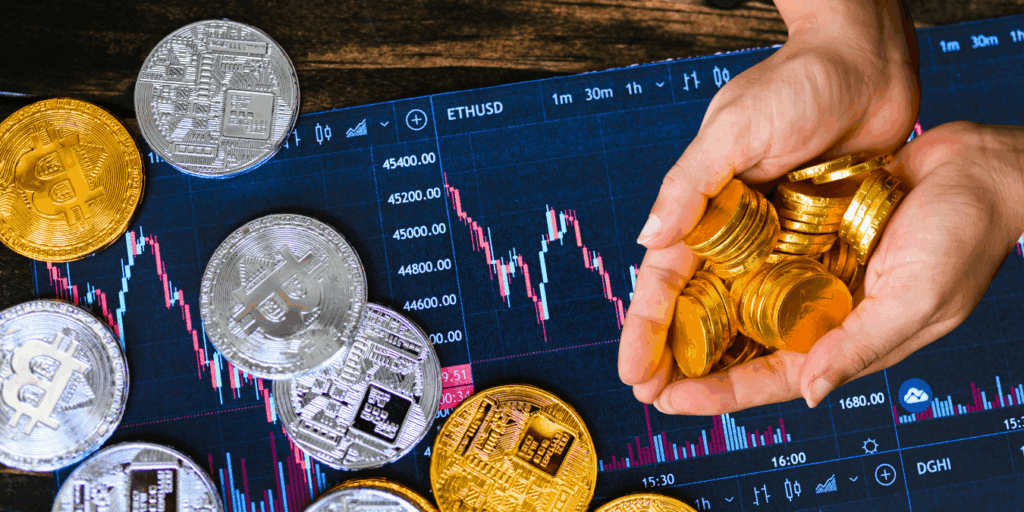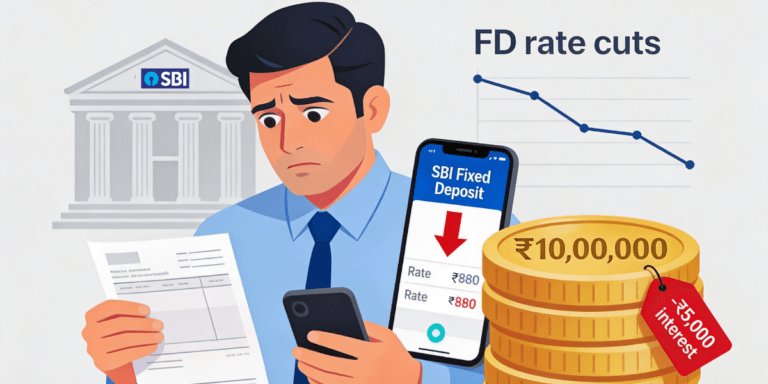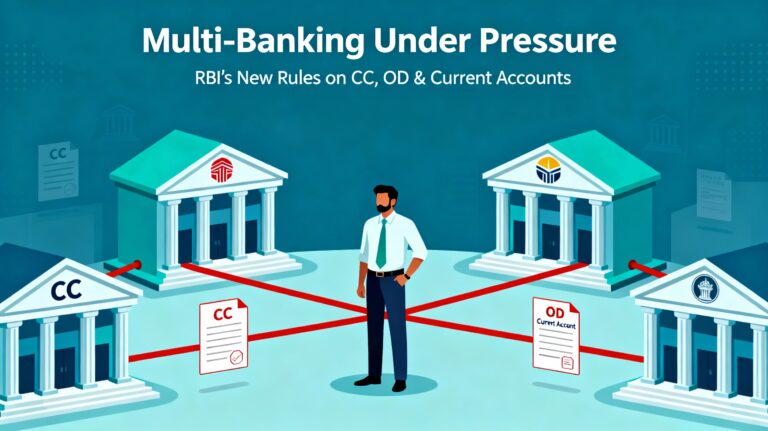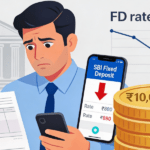
HDFC Bank Rate Cut 2025: How It Impacts Your Loan Repayment and Savings Strategy
How HDFC Bank’s 2025 rate cut could slash your loan EMIs and reshape Indian borrowing—but why are savers silently losing out? Uncover the hidden impacts, expert insights, and urgent strategies you can’t afford to miss in today’s rising cost and shifting RBI policy landscape.
The recent rate cut by HDFC Bank hides surprising details that matter deeply to Indian borrowers and investors in 2025—are you ready to discover how this subtle shift can deliver big financial relief and what it signals for the future of Indian lending? What few know is how these small basis point reductions trigger a cascade of advantages and potential risks in a rapidly evolving economic landscape.
What Exactly Happened with HDFC Bank’s Rate Cut?
In October-November 2025, HDFC Bank cut its Marginal Cost of Funds-based Lending Rate (MCLR) by 10 to 15 basis points (bps) across various loan tenures. For example, the overnight MCLR dropped from about 8.45% to 8.35%, and the three-year tenure saw a cut from around 8.75% to 8.65%. This move was implemented twice recently—once in early October and again in early November—reflecting the bank’s response to the Reserve Bank of India’s (RBI) policy repo rate reduction and changing market conditions.
MCLR, the benchmark for lending rates on loans such as home loans and personal loans, directly impacts borrowers by setting the minimum interest rate banks can charge. Hence, even a 10-15 bps cut translates into lower Equated Monthly Instalments (EMIs) for millions of borrowers, making loans more affordable.
Why This Cut Is More Significant Than It Seems
1. A Tactical Move Amid RBI Rate Cuts and Economic Trends
The RBI undertook multiple rate cuts in 2025 totalling 100 bps to stimulate economic growth amid global uncertainties and domestic economic shifts. HDFC Bank’s lending rate cuts are aligned with these monetary easing steps but reveal the bank’s strategic intention to boost credit growth as borrowers become more price-sensitive amidst inflation and inflation uncertainty.
2. Not Just a Relief for Borrowers—Savers Feel the Pinch Too
While borrowers benefit from lower EMIs, there is a downside for fixed deposit holders. Following RBI's rate cuts, HDFC Bank also trimmed fixed deposit (FD) rates by up to 25 bps for deposits below ₹3 crore, reducing the overall interest income for cautious savers seeking stable returns. This dual effect plays on the financial stress and choices customers face today.
3. Hidden Impact on Borrowing Behaviour and Home Loans
HDFC Bank’s home loan rates are linked not just to MCLR but also to the RBI’s policy repo rate, plus a margin based on borrower profiles. The bank’s margin variations (2.4% to 7.7%) mean some borrowers get more significant relief than others, depending on their creditworthiness. This nuanced pricing strategy masks complex impacts on affordability and credit access across income groups.
4. Competitive Pressures and Market Positioning
HDFC Bank’s rate cuts come amid fierce competition in India’s banking sector, where private banks aggressively pursue market share by adjusting rates faster than large public sector banks. This dynamic puts pressure on rivals to respond, potentially sparking a broader lending rate reduction wave in 2025’s last quarter and influencing future monetary policy transmission efficiency.
How Does This Rate Cut Affect You and the Indian Economy?
For Borrowers:
- Lower EMIs: Those with floating rate loans linked to MCLR can expect immediate relief in monthly loan instalments, freeing up disposable income.
- Potential to Borrow More: Reduced borrowing costs encourage homebuyers and businesses to take loans, potentially stimulating real estate and entrepreneurship.
- Smart Loan Management: Existing borrowers may consider refinancing or top-ups to leverage the lowered rates, optimizing financial costs.
For Savers:
- Lower FD Returns: Savers reliant on traditional fixed deposits face reduced yields, pushing some toward riskier investments or diversified portfolios.
- Need for Financial Planning: The rate environment urges savers to reassess their strategies, incorporating inflation expectations and liquidity needs.
For the Economy:
- Credit Growth Booster: A reduction in lending rates usually spurs credit demand, aiding economic expansion especially in sectors like housing.
- Inflation and Currency Impacts: More money in circulation might pressure inflation and affect currency valuation, areas RBI will monitor closely.
- Market Confidence: The rate cut reflects confidence by banks and RBI in India’s growth trajectory despite global headwinds, crucial for investor sentiment.
How does HDFC Bank's Rate Cut Compare to Other Banks
HDFC Bank's rate cut in 2025, involving a reduction of up to 10-15 basis points (bps) on its Marginal Cost of Funds-based Lending Rate (MCLR) across select tenures, compares as follows to other major Indian banks:
- HDFC Bank’s MCLR now ranges roughly from 8.35% to 8.65% depending on tenure, with the overnight rate cut from 8.45% to 8.35% as of November 2025. This rate cut was implemented twice recently, signalling a proactive pass-through of RBI repo rate cuts.
- In contrast, the State Bank of India (SBI), India’s largest lender, has largely kept its lending rates unchanged in the same period, with MCLR rates stable around 8.20% for overnight to 9.10% for three-year tenures. SBI cut its Repo Linked Lending Rate (RLLR) by 50 bps earlier in 2025 but has been slow to revise MCLR further in response to recent repo rate cuts.
- ICICI Bank and other private sector banks have also followed a similar path as HDFC Bank with modest MCLR reductions around 10 bps, aligning closely with RBI policy movements to stay competitive.
- Smaller or regional banks like Punjab National Bank (PNB) and Bank of India have cut their MCLR rates by up to 15 bps in mid-2025, matching or slightly exceeding HDFC Bank’s rate cuts.
- On savings account and fixed deposit fronts, HDFC Bank, SBI, and ICICI Bank commonly reduced savings rates by about 50 bps in mid-2025, moving towards more uniform rates around 2.75% per annum for savings balances, aligning deposit costs industry-wide.
Summary Comparison Table of Lending Rate Cuts in 2025
| Bank | Rate Cut (Basis Points) | Current MCLR Range (Approx.) | Notes |
| HDFC Bank | 10-15 | 8.35% - 8.65% | Proactive rate cuts closely aligned with RBI repo rate cuts. |
| State Bank of India | 0 | 8.20% - 9.10% | Minimal changes in MCLR despite earlier RLLR cut; more conservative approach. |
| ICICI Bank | 10 | Comparable to HDFC Bank | Follows RBI repo cuts with moderate MCLR reductions. |
| Punjab National Bank | Up to 15 | Variable | Competitive cuts, especially in regional markets. |
| Bank of India | Up to 15 | Variable | Similar to PNB with focus on local competitiveness. |
This table highlights that HDFC Bank’s MCLR cuts are moderate but more aggressive than SBI’s, with similar moves by other private and regional banks to stay competitive in India’s lending market in 2025.
Expert Insights and Current Trends
Financial analysts highlight that while HDFC Bank’s cut seems modest, its timing and repetition suggest an aggressive stance to ensure smooth transmission of RBI’s policy easing to end consumers. Indian consumers, facing inflationary pressures, welcome such ease, which also encourages banks to mitigate default risks by maintaining active borrowing.
The rate cut follows inflation and policy uncertainties in 2025, with banks acting cautiously yet proactively to sustain liquidity. Experts predict more such adjustments through 2026, with banks balancing profitability with competitive pricing strategies.
Actionable Takeaways
- Borrowers: Check loan agreements for MCLR linkage; refinance or apply for new loans now to benefit from lower EMIs.
- Savers: Review fixed deposit investments; explore diversification beyond traditional FDs to hedge against rate cuts.
- Investors: Watch RBI policy signals and private bank announcements closely for shifts in credit market dynamics.
- Homebuyers: Consider accelerating purchase plans; lower borrowing costs may improve affordability margins.
What’s Next? A Rate Cut Ripple with High Stakes
As India heads into 2026, HDFC Bank’s strategic lending rate cuts hint at deeper shifts in the banking and economic landscape. Will the easing cycle continue, and how will banks’ balance risk, profitability, and customer acquisition? The next moves by RBI and major banks could redefine home ownership, credit, and savings patterns in unprecedented ways.
Disclaimer: The use of any third-party business logos in this content is for informational purposes only and does not imply endorsement or affiliation. All logos are the property of their respective owners, and their use complies with fair use guidelines. For official information, refer to the respective company’s website.






























